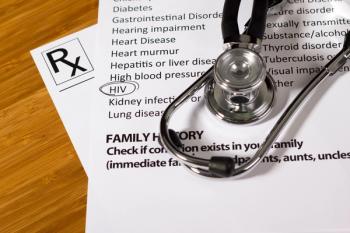
Good News for Health-System Pharmacists
An ASHP survey found that more pharmacists are being hired due to expanding roles.
As pharmacists’ role in health care expands, more pharmacists were hired by health systems in 2017, according to the results of a survey by ASHP.
The organization found that, on average, hospitals had 13.3 full-time pharmacists and 17.4 full time pharmacists per 100 occupied beds on staff in 2017. In 2015, there were an average of 11.4 full-time equivalent (FTE) pharmacists per hospital, and 15.6 FTE pharmacists per 100 beds. This is up from 2005, when there were 10.1 FTE pharmacists employed per hospital and 13.1 FTE pharmacists per 100 occupied beds.
There were 11.2 FTE pharmacy techs and 14.7 per 100 occupied beds in 2017 on average, up from 11 FTE pharmacy techs and 14.8 per 100 occupied beds in 2015.
Related article:
“It really indicates that, even though there is a lot more automation used, the number of pharmacists continues to grow,” Douglas Scheckelhoff, MS, FASHP, Senior Vice President in
FTE positions are increasing because there are new roles for pharmacists, including antimicrobial stewardship, pharmacy informatics, and “other new specialty areas and new roles for pharmacists,” Scheckelhoff said.
In the area of antimicrobial stewardship, 80% of nearly 700 people who responded to the survey said that pharmacists’ primary role is in leadership and accountability of these programs, compared to just 57% who said that in 2015.
Pharmacy technicians are also taking on new roles, such as medication reconciliation. “There are new types of activities for techs as well. Around 30% of hospitals use techs in that way [for medication reconciliation],” Scheckelhoff said.
In addition, 75.2% of all hospitals surveyed operated outpatient pharmacies in 2017, compared to 70.2% in 2015, and 70.6% of all hospitals operated a discharge prescription service in 2017, compared to 62.8% in 2015. “[Having operating outpatient pharmacies] is more common in the larger hospitals, in order to make sure patients get their medications when they go home,” Scheckelhoff said.
Related article:
He added, “Pharmacies are open more hours, recognizing the value that pharmacists bring; they are being relied upon to improve medication use and medication safety.”
The ASHP survey also found that pharmacists are actively using strategies to detect and prevent controlled substance diversion. Eighty percent of hospitals surveyed use audits to reconcile removals from automated dispensing cabinets with medication administration records (MARs). Seventy-two percent have separation of ordering and receiving functions to prevent diversion, while 63% use diversion detection software for surveillance, and 54% use audits to reconcile dose administered to order, according to respondents.
The survey results were presented at the ASHP Midyear 2017 conference in Orlando.
Newsletter
Pharmacy practice is always changing. Stay ahead of the curve with the Drug Topics newsletter and get the latest drug information, industry trends, and patient care tips.















































































































